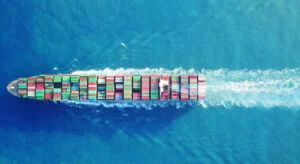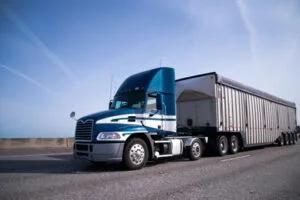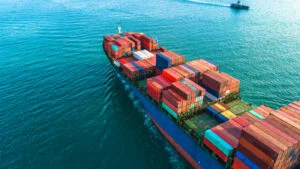One downside of ocean freight is the final bill you may receive after shipping your cargo to the destination.
Ocean freight surcharges could add up quickly, The majority of these surcharges are intended to compensate Carriers for a variety of additional expenses (in addition to the basic cost of transporting cargo from origin to destination).
Below, we will review a common list of ocean freight surcharges and what they mean.
Ocean freight surcharges
What does ocean freight surcharges mean?
Because heavy shipments are more challenging to load and unload than lighter ones, there is a price associated with them.
However, specialist tools like cranes are also necessary for certain kinds of freight. The fee assists in making up for that.
Basic Ocean Freight (BAS)
The basic cost of moving a container or shipment from point A to point B is covered by BAS. The quote typically reads “BAS USD xxx + surcharges/ accessorials” when the container carrier receives a rate inquiry for any corridor.
The BAS is expressed in US dollars and is derived from the cost of the vessel, the length of the voyage, other fixed expenditures, and costs that are specific to that sailing.
Depending on variables like cargo type, commodity nature, overall container volumes under the customer’s control, regularity and consistency of cargo flow, involved corridors, routing, equipment size and type, strategic importance to the container carrier, etc., the BAS varies significantly from customer to customer.
BAS impacted by
BAS is also impacted by the dynamics of supply and demand in the market, as well as the rates set by competitors (which, in a highly competitive and oversupplied market, a carrier will be compelled to match, in order to increase utilization rates or simply to avoid losing cargo).
List of ocean freight surcharges
Surcharges’ ocean freight list includes 11 different surcharges, that we will talk about below.
Drayage fees
There are lots of possibilities when referring to drayage fees. Considering that drayage itself takes many different forms, so do the drayage fees. Inter-carrier drayage is the type that is typically thought of. During such time, cargo is transferred between several carriers, such as from a trucking carrier to a rail carrier. The cargo’s weight determines how much the drayage fee will cost.
Chassis split charges, pre-pull charges, and drop charges are a few additional drayage prices.
There are ways to reduce costs even if drayage and associated fees are engrained elements of the industry.
Such as:
Proper packaging
Adjusting freight weight.
Efficient shipping.
Using shipper-owned containers (SOCs).
CAF Charges
Carriers impose CAF Charges, also known as currency adjustment factor charges when shipments are imported into the US from specific Asian nations. especially around the Pacific Rim.
In order to account for exchange rate changes between the US dollar and other currencies, CAF was created.
The CAF Charges are one of the ocean freight fees that you are obligated to pay when they apply.
Low Sulphur Bunker
Ships must use gasoline with a maximum sulphur level of 0.1 percent when passing through so-called Emission Control Areas.
The sector has traditionally used fuel with a 1 percent concentration, which is a significant change.
The Low Sulphur Fuel Charge is a fee that you are obligated to pay, just as the CAF fees.
BAF Factor
The ship owners are subject to an additional surcharge called the bunker adjustment factor in order to cover these price changes. It was put in place to make up for the increased costs associated with delivering products.
Based on TEUs, BAF changes depending on the trade routes. Interested in learning more about the BAF and seeing what each line will cost you? Find out more information here.
The BAF Charge is an unavoidable tax, exactly like the Low Sulphur Fuel Charge.
Emergency Bunker Surcharge
The Emergency Bunker Surcharge is the last in the line of fuel-related taxes on this list of ocean freight surcharges. When fuel costs spike significantly, carriers impose this fee.
Because of this, operating the ship and transporting the containers around the world are more expensive.
You have no control over this additional fee, which is one of those surcharges.
VGM fee
Verified Gross Mass (VGM), to put it simply, is the combined weight of the shipping container and its contents. Included in that are dunnage, bracing, and the box’s tare weight.
All shippers are required by the International Convention for the Safety of Life at Sea to notify the VGM; otherwise, the container will not be allowed to board the vessel.
The VGM processing charge varies in price depending on the line. The fee, though, is $25.
Heavy Lift Surcharge
The reason for this charge is that heavier shipments are more challenging to load and unload than lighter ones. These kinds of cargo, however, also need specific tools, including cranes.
The additional fee aids in making up for that.
War Risk Surcharge
The War Risk Surcharge is a fee imposed by the carrier. It’s only applied when sailing in specific zones that are at war risk. This includes everything from actual war, as well as events that may escalate to war, and areas where piracy is a high risk.
When shipping goods in such areas, the War Risk Surcharge is levied to help cover potential extra costs like added security and extra fuel consumption due to re-routing.
Container Cleaning Fee
One of the more contentious surcharges on our list of ocean freight surcharges is this one. When verifying your invoice and before signing your contract, be aware that the Container Cleaning Fee is frequently charged incorrectly.
The majority of containers do not require cleaning, but there are certain exceptions, especially when it comes to reefers and insulated containers that convey perishable commodities.
Out of Gauge
Cargo that is “out of gauge” cannot fit into a container with six sides due to its size. If such is the case, you will be charged an out-of-gauge cost since the cargo will require more space, more fastening materials, and less room for containers to be stacked.
Carrier Security fee
The Carrier Security Fee is intended to assist carriers in covering the costs associated with maintaining the ISP’s code.
Additionally, the terminal levies fees in order to contribute to defraying costs, just like the carriers do. To abide by the ISP’s code at the calling port, they charge the carriers a fee. There is nothing you can do to prevent a fee.
How to book a quote?
If you want to calculate your cargo cost use the form below
Get your ocean freight service quote
Our ocean freight service is available FROM ANYWHERE TO ANYWHERE “GLOBAL REACH” with the best price and estimated time.







